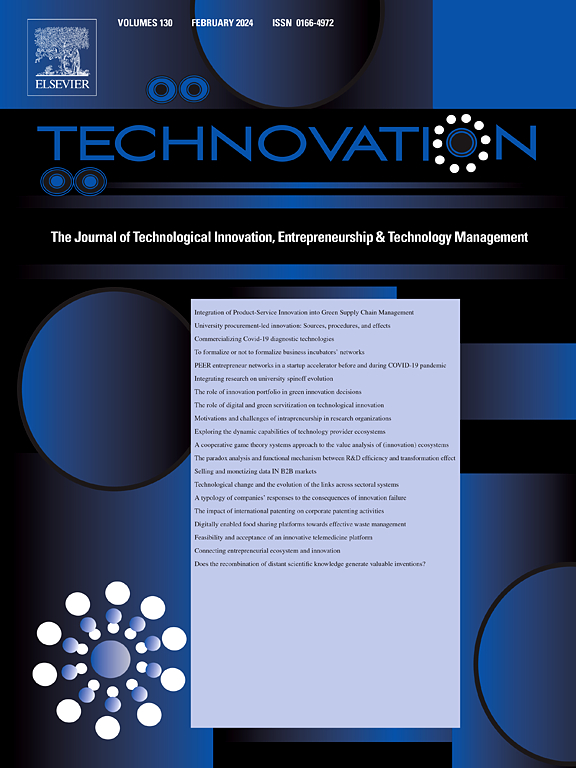AI narratives model: Social perception of artificial intelligence
IF 10.9
1区 管理学
Q1 ENGINEERING, INDUSTRIAL
引用次数: 0
Abstract
Narratives surrounding Artificial Intelligence (AI) shape its societal reception, technological development, and regulatory framing. This article proposes a theoretical model to interpret these narratives, especially in the context of growing public engagement with generative AI technologies. The model is structured along three key coordinates: apocalypse, assistance and transcendence. Transitions between them are understood through two dominant narrative frames: the Pandora's Box frame (associated with loss of control), and the Social Progress frame (associated with the improvement of human life), each tending toward dystopian and utopian extremes, respectively. Based on this model, two questions are addressed: What types of AI stories predominate in popular culture? And do audiences actually align with them? To answer these, two empirical analyses are conducted. First, a review of the 300 highest-grossing science fiction films in North America reveals a rich variety of narratives across the entire spectrum, rather than clustering around opposing extremes. Second, focus group discussions with categorized audiences of varying levels of familiarity with AI technology show that they align progressively along the narrative spectrum: the general public tends toward apocalyptic framings, the interested public (in science and technology) focuses on assistance narratives, and the engaged public embraces improvement scenarios. This sequential distribution suggests a strong correlation between AI proximity and narrative positioning, with greater engagement associated with more positive —yet nuanced— views of AI. The model opens multiple avenues for future research, including the use of wider data sources, cross-cultural comparisons, longitudinal studies, tracking of narrative shifts, and focused analyses of more complex representations.
人工智能叙事模型:人工智能的社会感知
围绕人工智能(AI)的叙事塑造了它的社会接受度、技术发展和监管框架。本文提出了一个理论模型来解释这些叙述,特别是在公众越来越多地参与生成人工智能技术的背景下。该模型由三个关键坐标构成:启示、援助和超越。它们之间的过渡可以通过两个主要的叙事框架来理解:潘多拉的盒子框架(与失去控制有关)和社会进步框架(与人类生活的改善有关),每个框架分别倾向于反乌托邦和乌托邦极端。基于这个模型,我们解决了两个问题:什么类型的AI故事在流行文化中占主导地位?观众真的和他们站在一起吗?为了回答这些问题,本文进行了两项实证分析。首先,对北美300部票房最高的科幻电影的回顾揭示了整个系列中丰富多样的叙事,而不是集中在相反的极端。其次,与不同程度熟悉人工智能技术的分类受众进行的焦点小组讨论表明,他们在叙事范围上逐渐保持一致:普通公众倾向于世界末日的框架,感兴趣的公众(在科学和技术方面)专注于援助叙事,参与其中的公众接受改进情景。这种顺序分布表明,AI接近度与叙事定位之间存在很强的相关性,更大的参与度与更积极(但微妙)的AI观点有关。该模型为未来的研究开辟了多种途径,包括使用更广泛的数据源、跨文化比较、纵向研究、追踪叙事转变,以及对更复杂表征的集中分析。
本文章由计算机程序翻译,如有差异,请以英文原文为准。
求助全文
约1分钟内获得全文
求助全文
来源期刊

Technovation
管理科学-工程:工业
CiteScore
15.10
自引率
11.20%
发文量
208
审稿时长
91 days
期刊介绍:
The interdisciplinary journal Technovation covers various aspects of technological innovation, exploring processes, products, and social impacts. It examines innovation in both process and product realms, including social innovations like regulatory frameworks and non-economic benefits. Topics range from emerging trends and capital for development to managing technology-intensive ventures and innovation in organizations of different sizes. It also discusses organizational structures, investment strategies for science and technology enterprises, and the roles of technological innovators. Additionally, it addresses technology transfer between developing countries and innovation across enterprise, political, and economic systems.
 求助内容:
求助内容: 应助结果提醒方式:
应助结果提醒方式:


